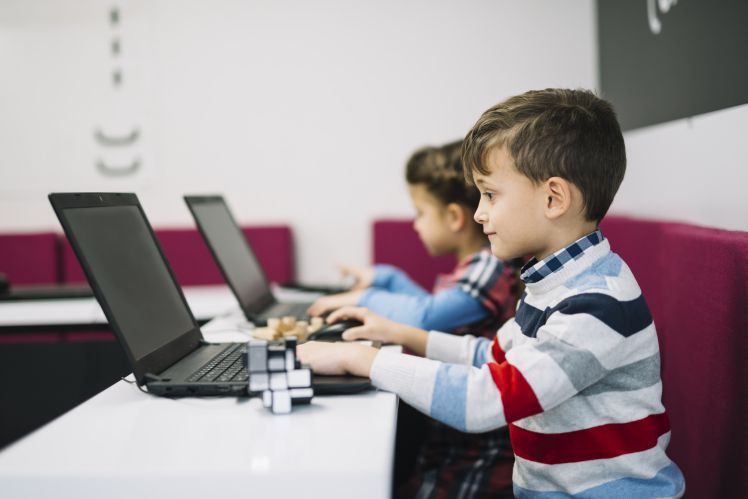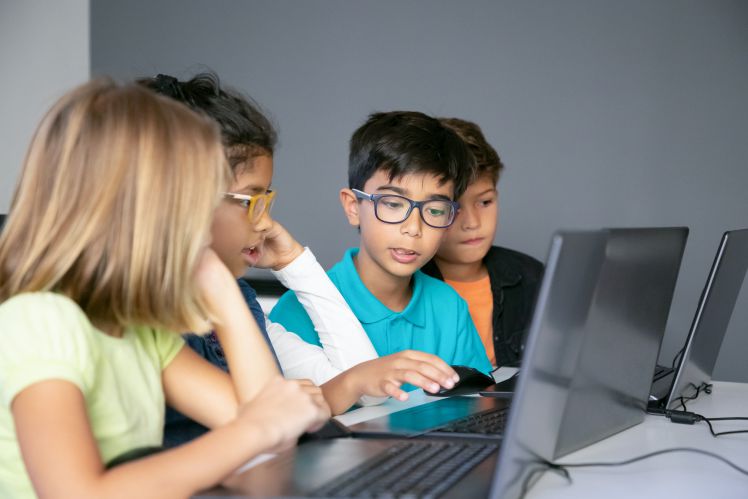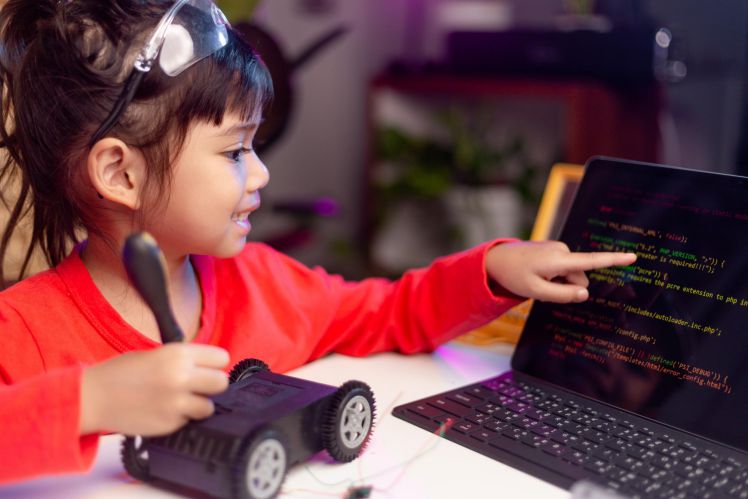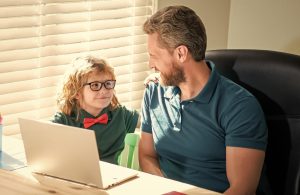In today’s interconnected, technology-driven world, coding has emerged as the new literacy. Similar to reading, writing, and arithmetic, programming has swiftly ascended the ranks to become a core competency for the next generation. As parents, educators, and mentors, understanding the gravity of this skill is paramount. Why? Because our children are growing up in a realm where digital fluency isn’t just advantageous, it’s essential.
In this article, we explore the compelling reasons why children should learn programming, delving into its significance in preparing them for the evolving job market, fostering critical thinking, nurturing creativity, and offering enjoyable avenues like games and robotics, while also providing valuable resources to help them get started on this educational journey.
Why Kids Need to Learn Programming: An Introduction
Diving into the complex universe of programming might seem daunting for young minds. Yet, just as a child intuitively picks up their native tongue, they can also seamlessly navigate the syntax and structures of coding languages. The key lies in early exposure. Introducing coding to kids at a tender age not only ensures better comprehension but also ingrains this skill deeply, setting a solid foundation for future endeavors.

Programming Skills for the Future: The Changing Job Market
Change is the only constant, especially in the global job market. Gone are the days when traditional vocations dominated the employment landscape. Today, as we stand on the brink of the Fourth Industrial Revolution, a new set of jobs is emerging, jobs that heavily rely on digital competencies.
With automation, artificial intelligence, and machine learning transforming every industry, the demand for coding expertise is skyrocketing. Whether it’s healthcare, using algorithms to predict patient outcomes, finance, employing bots for customer service, or agriculture, leveraging drones for crop surveillance, the golden thread that binds these sectors together is coding.
The job landscape is evolving at breakneck speeds. With advancements in Quantum Computing, Augmented Reality, and the burgeoning metaverse, the demand for coding proficiency is skyrocketing. Predictions indicate that in the next decade, a significant portion of jobs, even those outside of traditional tech roles, will require some understanding of coding. And it’s not just about job availability; it’s about job creation. Equipped with coding skills, the next generation can craft solutions, startups, and innovations that we haven’t yet imagined.
While the specific programming languages of today might evolve, the underlying logic, problem-solving acumen, and analytical thinking that coding fosters will remain timeless. By nurturing these skills now, we’re preparing our kids for professions that haven’t even been conceived yet.
Programming for Problem-Solving: Developing Critical Thinking Skills
Beyond its manifest technical applications, programming is a cognitive endeavor. It’s not just about writing lines of code but about sculpting solutions, one logical block at a time.
A study from the University of Chicago revealed that children introduced to coding exhibited enhanced cognitive abilities, particularly in problem-solving and logical reasoning. Real-world applications are endless. Consider a group of middle schoolers who designed an app to help the elderly in their community locate accessible public transport or another set of kids who developed a game to raise awareness about climate change. Coding isn’t just about computers; it’s about creating tangible change.
Consider this: when children learn to code, they’re simultaneously refining their critical thinking and problem-solving muscles. They grapple with challenges, debug errors, and iterate solutions, all the while sharpening their analytical prowess. In an era rife with information overload, the ability to dissect problems, discern patterns, and devise effective solutions becomes invaluable. Programming offers an avenue to cultivate these skills in a contextual, hands-on manner.

Programming for Creativity: Unlocking Imagination and Innovation
Think of coding as the paintbrush of the 21st century. With it, kids can bring their imaginative worlds to life. Take, for example, young tech prodigies who’ve launched applications on the App Store or innovators who’ve turned a class project into a global sensation. With platforms like Codiska, they’re not just learning to code; they’re learning to create.
Bridging the realms of logic and creativity, programming emerges as a potent tool for imaginative expression. For the uninformed, coding might seem rigid. However, delve deeper, and it’s evident that coding is the canvas on which modern artistry unfolds.
From designing dynamic websites, animating 3D characters, to creating immersive virtual reality experiences—coding underpins every digital masterpiece. For kids, this means the power to bring their wildest imaginations to life. Think of programming as the paintbrush, with which they can color the digital world, innovating and iterating as they see fit.
Programming for Fun: Games, Robotics, and More
Who said learning can’t be fun? Delving into the world of programming unveils a treasure trove of engaging pursuits. Kids can design their own video games, complete with complex mechanics and eye-catching graphics. They can dabble in robotics, animating machines to dance to their tunes. Or, they could venture into the skies, programming drones to execute intricate aerial maneuvers.

Moreover, coding isn’t an isolated activity. Through platforms dedicated to “coding for kids,” like Codiska, they can collaborate with peers worldwide, pooling ideas, sharing code, and building monumental projects together.
How to Get Started: Resources and Tips for Learning to Code
Embarking on the coding voyage has never been easier, courtesy of a plethora of resources tailored for young learners. Platforms like Codiska are spearheading the “coding for kids” movement, offering curated curricula, interactive tutorials, and real-world projects.
Yet, as with any skill, mastery in coding demands dedication. Regular practice, relentless curiosity, and a dash of perseverance are vital. For guardians and mentors, fostering a conducive learning environment becomes imperative. This means celebrating tiny victories, encouraging experimentation, and reframing mistakes as learning opportunities.
The digital realm is abundant with resources. For younger children, block-based coding platforms introduce fundamental concepts in an engaging manner. As they grow, they can transition to script-based coding, diving deeper into languages like Python or Java. Codiska, with its diverse curriculum catering to different age groups and languages, stands as a beacon for budding coders. Parents and educators, remember: coding, like any skill, thrives on practice and perseverance. Celebrate small wins, encourage experimentation, and watch as your young coder flourishes.
Conclusion
In our rapidly evolving digital age, the significance of coding cannot be overstated. It’s not just about deciphering the language of machines; it’s about wielding a powerful tool that unlocks vast terrains of creativity, problem-solving, and opportunities in the job market. As we’ve seen, programming is more than just a means to a tech career, it’s a medium of artistic expression, a catalyst for cognitive development, and a bridge to collaboration and teamwork.
The future is becoming increasingly digitized, and our children will be at the forefront of this transformation. By being proficient in coding, they won’t just be passive consumers of technology; they’ll be the visionaries and innovators, guiding our world towards a brighter and more inclusive tomorrow. Such urgency underscores the paramount importance of coding education.
Yet, starting this journey is not without its challenges. How do we ensure that learning is engaging? How do we cater to different learning styles and paces? How do we provide an environment that fosters both creativity and critical thinking? This is where platforms like Codiska shine. By championing a comprehensive, multilingual, and age-appropriate curriculum, Codiska bridges the gap between potential and expertise. With mentor-guided sessions and a plethora of resources, it ensures that the phrase “coding for kids” is not just an educational trend but an enduring commitment to our children’s future.
As we stand at this pivotal juncture, it’s essential to recognize and act upon the transformative power of programming. By equipping our children today, we are setting the stage for a smarter, more innovative, and empowered generation that will chart the course of our collective future.







